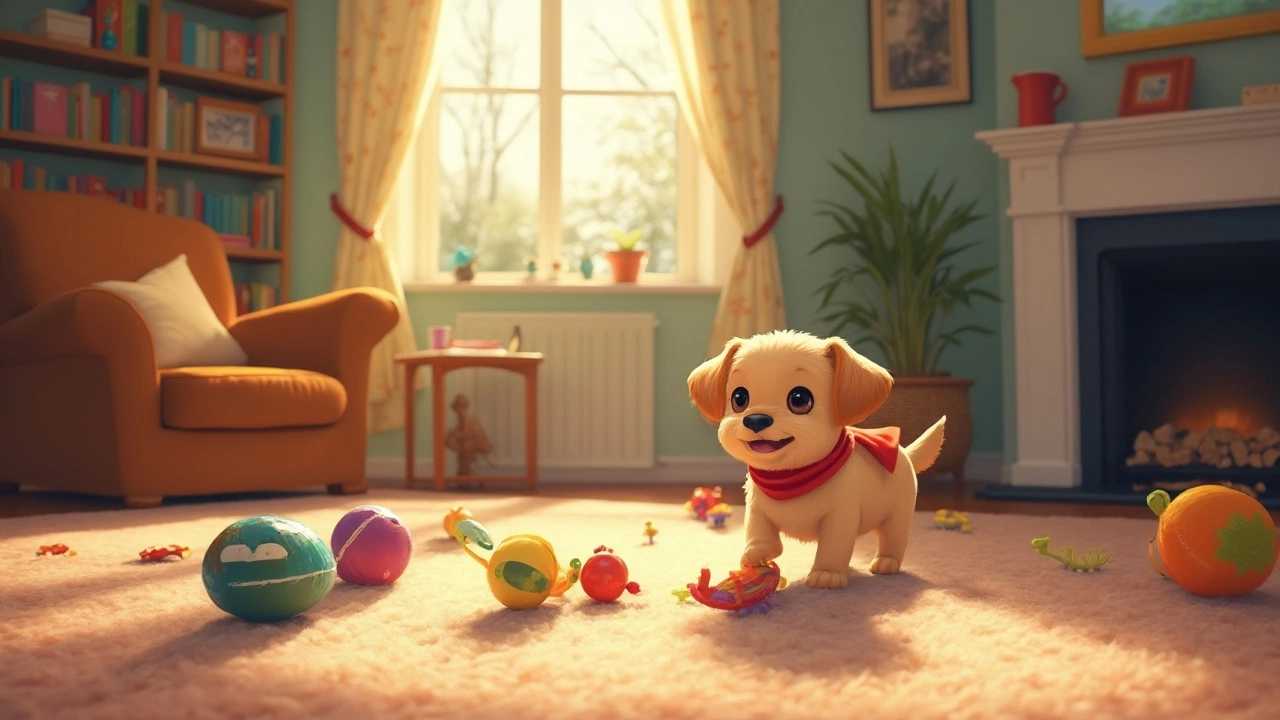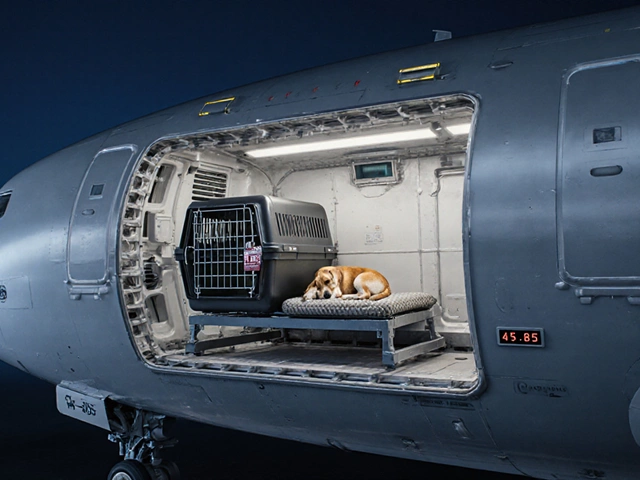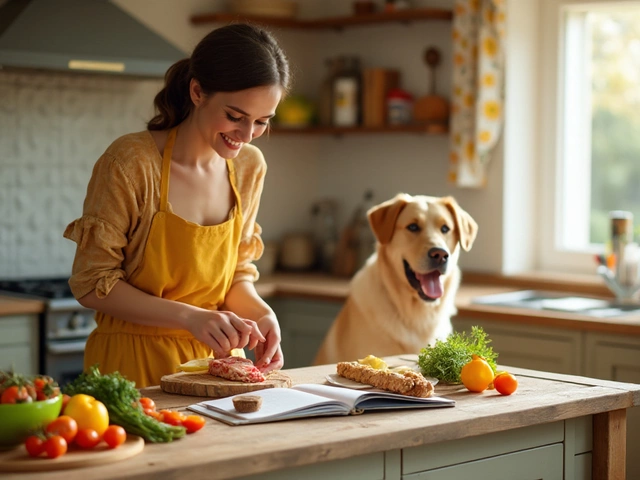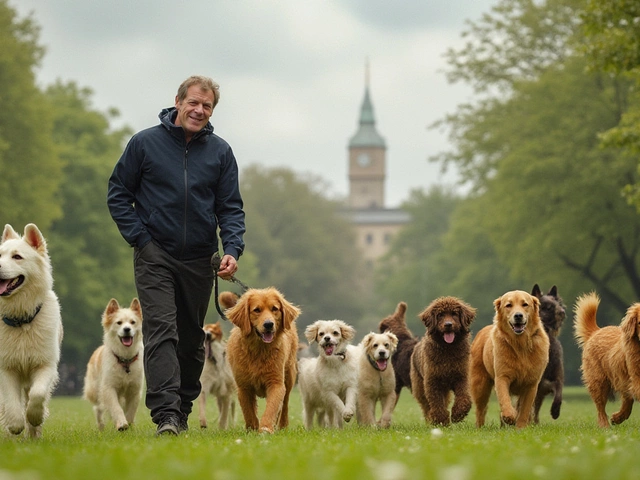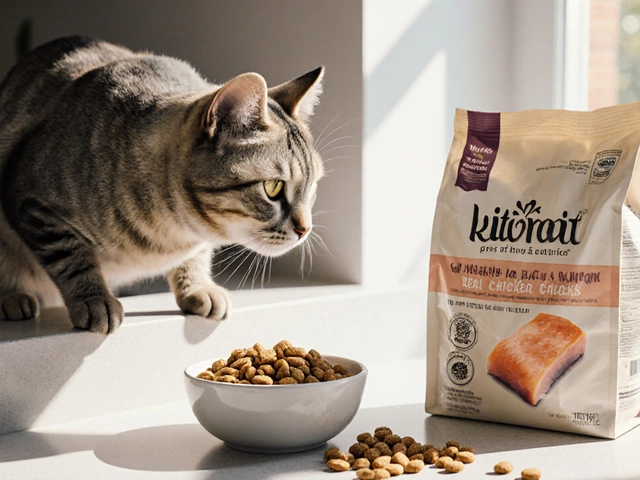So, you’ve got a little furball bounding around your home—a 10-week-old puppy, full of energy and curiosity. But what happens when you need to leave the house? Can you really leave them alone at this tender age? Let’s dig into that.
First off, it’s important to understand the little one’s needs. Puppies, especially at ten weeks, are like toddlers—they crave attention, they’re exploring their world, and they’ve got heaps of energy. Leaving them alone isn’t just about making sure they’re physically safe; it’s about their emotional well-being too.
Creating a safe environment is key. Think of it like baby-proofing but for puppies. Remove hazards like stray electrical cables or anything they might chew and swallow. And speaking of chewing, toys are your best friend here. They’re not just entertainment—they’re crucial for teething and keeping your pup occupied.
- Understanding Puppy Needs
- Safe Puppy Environment
- Choosing the Right Toys
- Crate Training Benefits
- Practical Tips for Alone Time
Understanding Puppy Needs
At 10 weeks old, your puppy's world is expanding rapidly. They're learning and discovering, but they still need plenty of love and attention. So, what exactly should you be aware of when it comes to their needs?
Social Interaction
Puppies are naturally social creatures. During this time, your puppy is learning to form bonds and socialize. Their interactions aren't just with you—they need to be slowly introduced to other people and pets to build confidence. Regular socialization reduces anxiety and helps them become well-adjusted adult dogs.
Physical Exercise
While it may seem like they have endless energy, puppies require a balanced amount of physical activity. Too much, and they can become overtired; too little, and they might turn into little destructors of everything in their path. Short bursts of playtime combined with gentle walks are ideal at this age. It helps to burn off energy and encourages healthy development.
Mental Stimulation
Your pup needs to engage their brain just as much as their body. Puzzle toys or safe chew toys can keep their mind active, making puppy toys more important than ever. These toys not only prevent boredom but also redirect their teething tendencies away from your furniture.
Emotional Security
Above all, puppies crave a sense of security. They might cry when left alone because they miss your presence—a common thing at this age. If you need to go out, consider leaving an item of your clothing with your scent as a comfort piece.
| Need | Importance |
|---|---|
| Social Interaction | Builds confidence, reduces anxiety |
| Physical Exercise | Encourages healthy growth |
| Mental Stimulation | Prevents boredom, teething aid |
| Emotional Security | Reduces separation anxiety |
Understanding these core needs will help you make informed decisions, setting both you and your pup up for a happier experience when they spend time home alone.
Safe Puppy Environment
Creating a safe environment for your puppy is a vital step towards ensuring their well-being when you can't be by their side. Let's break down a few simple yet effective strategies.
Cord and Cable Safety
Puppies love to chew, and dangling cords can look like the best toy ever. It's crucial to secure or hide electrical cords to prevent any chewing mishaps. Use cord covers or run cords behind furniture where those curious little teeth can't reach.
Secure Hazardous Items
Your home might be filled with everyday items that can be dangerous for a small puppy. Cleaning supplies, sharp objects, or even certain houseplants can be harmful if ingested. Store these items in cupboards or on high shelves.
Creating a Restricted Area
If giving your puppy free rein over the house feels daunting, consider creating a safe zone. Use a playpen or baby gate to keep them in an area where they have access to toys, a comfy bed, and water. This also helps them feel secure and relaxed.
Temperature Control
Make sure your puppy's space is at a comfortable temperature. Avoid areas that get too warm or too cold and ensure they have a cozy spot to curl up in.
Visual Stimulation
Your puppy needs mental stimulation just as much as physical safety. Positioning their play area where they can look out a window can keep them entertained, observing the great outdoors and keeping loneliness at bay.
Checklist for a Safe Environment
- Check for potential choking hazards.
- Clear away fragile items that might be tipped over.
- Ensure there's enough water available.
- Verify secure latches on cabinets and doors.
With these steps, you'll make your home a safe haven for your curious little friend. Remember, a well-prepared environment isn't just about adding layers of security; it's about peace of mind when you have to be apart.
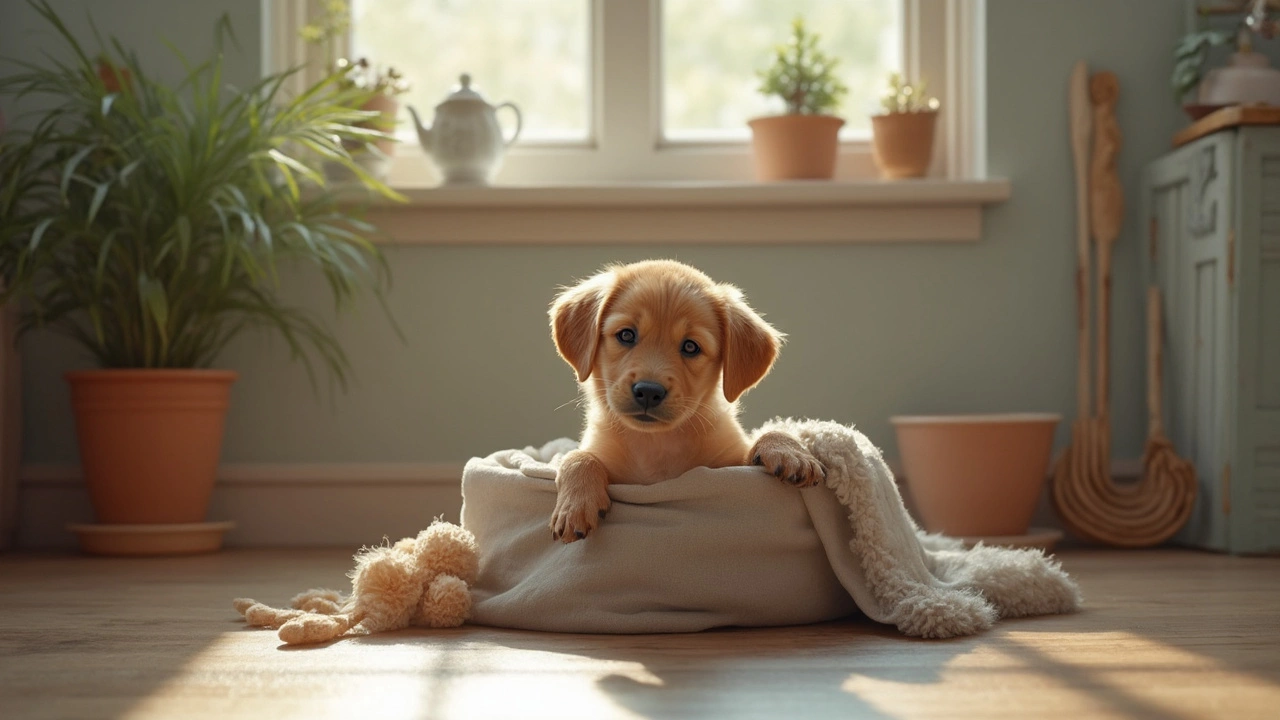
Choosing the Right Toys
Picking the right toys for your puppy isn't just about keeping them busy while you’re out—it's about aiding their development and keeping their little minds stimulated. So, what should you grab for that lively bundle of joy?
Why Toys Matter
Puppy toys are not only for entertainment—they play a crucial role in a pup's development. Chewing toys help with teething pain, while interactive toys keep their mind engaged. So, when you’re out searching, think about their benefits beyond fun.
What to Look For
- Durability: Puppies can be pretty aggressive chewers. Toys made from tough, non-toxic rubber or strong nylon are good choices.
- Size: Make sure the toy is suitable for your puppy's size. Too small and they might swallow it; too large and they might struggle to play.
- Engagement: Toys that squeak or bounce unpredictably can capture interest, keeping your puppy busy and distracted.
Top Toy Picks
Let’s talk specifics. Here are a few favorites among puppy owners:
- KONG Classic: This versatile toy can be stuffed with treats, providing mental stimulation and satisfying their need to chew.
- Nylabone Chew Toys: These are great for dental health, helping to clean teeth while they gnaw away.
- Interactive Puzzle Toys: These challenge your puppy to think and problem-solve, ideal for keeping their mind active.
Extra Insights
Remember to rotate their toys regularly to keep things fresh. Puppies can get bored of the same old stuff. And keep an eye out for any wear and tear—broken bits can be swallowed, leading to a trip to the vet.
By choosing the right toys, you’re not just preventing boredom; you’re contributing to a happy and healthy puppy. That’s something every pet parent can wag their tail at!
Crate Training Benefits
Crate training can be a lifesaver for both you and your puppy. Think of the crate as your pup's own little safe haven, a place where they can chill out, feel secure, and, most importantly, stay out of trouble when you're not around.
Why Use a Crate?
Puppies are natural den animals, so a crate caters to their instinct for a cozy spot to call their own. It provides a sense of security and can vastly speed up house training. After all, puppies usually don't like to mess up the space they sleep in.
How Crate Training Eases Alone Time
Leaving a young puppy home alone can be nerve-racking, but with a crate, you know they won't be chewing your favorite shoes or getting into precarious situations. The crate keeps them in a controlled environment, giving you peace of mind.
Steps for Effective Crate Training
- Start gradually: Introduce your pup to the crate with the door open, tossing in toys and treats so they associate it with positives.
- Short bursts: Let your pup spend short periods in the crate at first, then gradually increase the time as they get more comfortable.
- Consistent schedule: Stick to a routine. Puppies thrive on schedules and consistency helps them understand when it's quiet time.
According to a survey, dog owners found that crate-trained dogs were 30% less likely to develop separation anxiety compared to those without crate exposure. It’s not just about confinement; it's about giving structure and a sense of security.
The bottom line? A crate isn't a cage—it's a haven. By incorporating crate training into your puppy care routine, you're setting the stage for a well-adjusted, happy pup who can handle short absences better. Just remember, the crate should never be used as a punishment; it should always be a positive space.
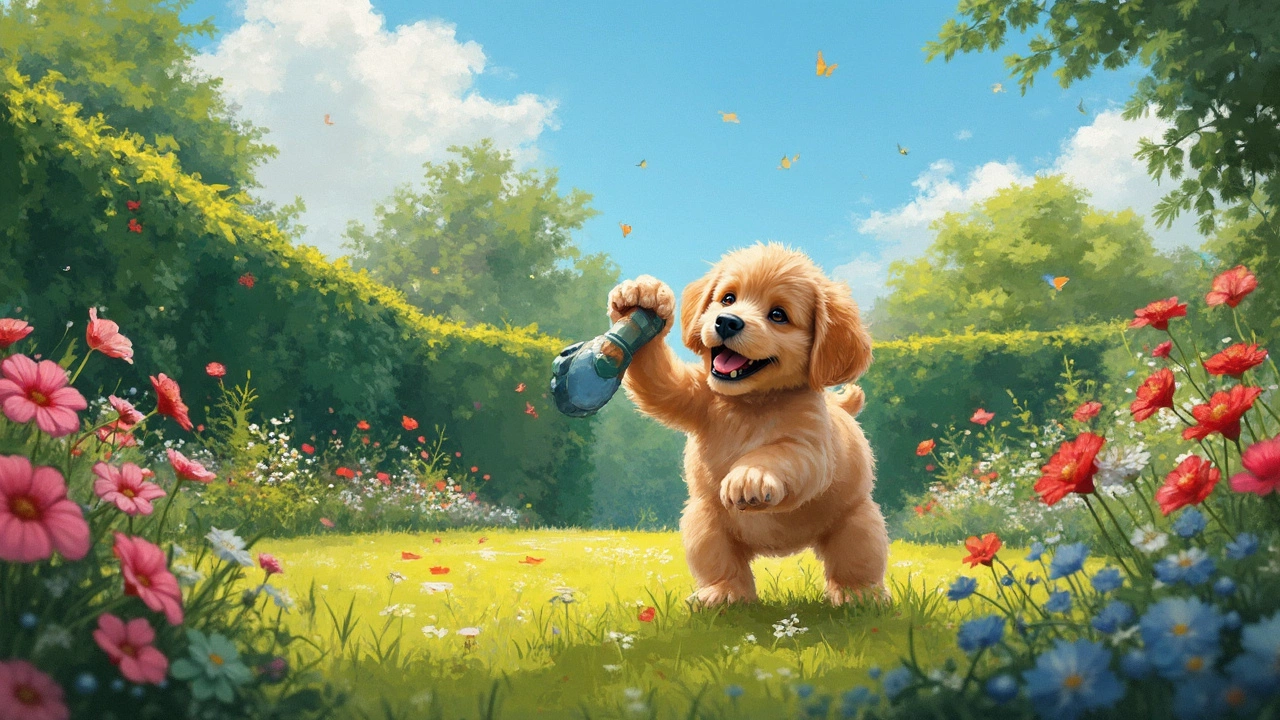
Practical Tips for Alone Time
Leaving your 10-week-old puppy home alone doesn’t have to be nerve-wracking. With a bit of planning, you can make sure your little buddy is safe, happy, and occupied, even when you're not around. Let's get into how you can manage this.
Start with Short Durations
Don’t expect your puppy to be okay alone for hours on end right away. Begin by leaving them for short periods—five to ten minutes. Gradually increase this time as they get more comfortable. This way, your puppy learns that alone time isn't so scary.
Make Use of Puppy Toys
Toys are essential, not just to keep your puppy engaged, but also to help them with teething. Chew toys, puzzle toys, and interactive toys keep their minds busy, which is a good distraction. Consider rotating these toys to keep things fresh and exciting.
"Puppies need mental stimulation to keep them happy when alone," says Dr. Emily Green, a certified animal behaviorist. "A well-chosen toy can prevent boredom and anxiety."
Create a Safe Space
Using a crate can be incredibly beneficial. When done right, crate training offers your puppy a safe haven—a place they can feel secure. Ensure the crate is large enough for them to stand, turn around, and lie down comfortably. You can also use a puppy playpen, giving them more space to move around.
Stick to a Routine
Puppies thrive on routine. Make sure your pup knows what to expect by keeping mealtimes, playtimes, and naptimes on schedule. Before you leave, engage them in active play to tire them out. A sleepy puppy is less likely to feel anxious about your absence.
Use Technology to Stay Connected
If you’re worried about leaving your pet unsupervised, technology can help. Pet cameras allow you to keep an eye on them and even talk to them. Some cameras come with treat dispensers, which can be a fun way to interact with your dog while you're away.
By following these steps and investing time in your puppy’s well-being, leaving them home alone becomes a positive experience rather than a stressful one. Remember, every puppy is different, so adjust these tips to fit your little one's needs.

